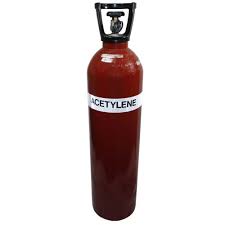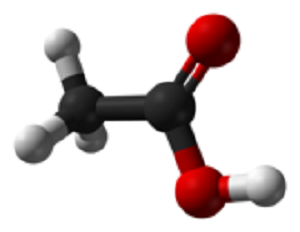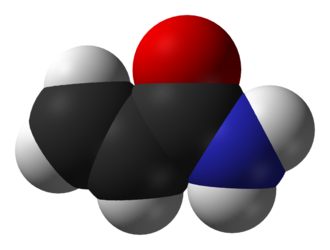Acetylene-Health Hazard and Toxicity
Sep 2,2019
Description
Acetylene (100% purity) is odourless, but commercial purity has a distinctive garlic-like odour and is very soluble in alcohol and almost miscible with ethane. Acetylene is a flammable gas and kept under pressure in gas cylinders. Under certain conditions, acetylene can react with copper, silver, and mercury to form acetylides, compounds which can act as ignition sources. Brasses containing less than 65% copper in the alloy and certain nickel alloys are suitable for acetylene.

Toxicity Data
LC50 inhal (rat) simple asphyxiant (>500,000 ppm)
TLV-TWA (ACGIH) simple asphyxiant
Health Hazard
Acetylene is an asphyxiate like other hydrocarbongases. Exposure to its atmosphere cancause death from suffocation or asphyxiationby exclusion of oxygen. It is nontoxicbut narcotic at high concentrations. An exposureto 20% concentration in air may produceheadache and dyspnea in humans; whileinhaling a 50% acetylene in air for 5 minutesmay be fatal (NIOSH 1986).
Toxicity
Acetylene is relatively nontoxic and has been used as an anesthetic. Inhalation of acetylene can be hazardous because of its action as a simple asphyxiant.Concentrations of about 10% in air cause slight intoxication, and levels of 20% in air may produce headaches and labored breathing. At higher concentrations (33% and above), acetylene acts as a narcotic, causing unconsciousness in 7 min or less, with rapid and full recovery normally seen on removal from exposure of less than several hours. Concentrations of acetylene above 50% in air can cause death by
asphyxiation within 5 min.
Commercially available acetylene may contain highly toxic impurities, including phosphine, arsine, and hydrogen sulfide; the presence of these impurities must be considered in setting acceptable exposure levels to acetylene. For example, the concentration of acetylene containing 95 ppm of phosphine impurity (which has a TLV of 0.3 ppm) should not exceed 3160 ppm to stay within the TLV for phosphine.
There is no evidence that acetylene is a human carcinogen or reproductive toxin.
Flammability and Explosibility
Acetylene is a highly flammable gas and forms explosive mixtures with air over an unusually wide range of concentrations (2 to 80%). Acetylene can polymerize exothermically, leading to deflagration. With a very high positive free energy of formation, acetylene is thermodynamically unstable and is sensitive to shock and pressure. Its stability is enhanced by the presence of small amounts of other compounds such as methane, and acetylene in cylinders is relatively safe to handle because it is dissolved in acetone. Acetylene fires can be fought with carbon dioxide,
dry chemical, and halon extinguishers; firefighting is greatly facilitated by shutting off the gas supply.
Reactivity and Incompatibility
Acetylene forms highly unstable acetylides with many metals, including copper,brass, mercury, potassium, silver, and gold. The dry acetylides are sensitive,powerful explosives. Acetylene may react violently with fluorine and other halogens (chlorine, bromine, iodine) and forms explosive compounds on contact with nitric acid.
Storage and Handling
In particular, acetylene should be used only in well-ventilated areas free of ignition sources. Acetylene is supplied in specially designed steel cylinders containing acetone and an inert material. More than 1 liter of the gas should never be stored in other containers. Brass or copper tubing, valves, or fittings should never be allowed to come in contact with acetylene. If acetylene must be purified, it should be passed through concentrated H2SO4 and NaOH (do not use activated carbon).
Accidents
If large amounts of this compound are inhaled, move the person to fresh air and seek medical attention at once.In the event of an acetylene leak, shut down and remove all ignition sources and ventilate the area at once to prevent flammable mixtures from forming. Carefully remove cylinders with slow leaks to remote outdoor locations. Limit access to an affected area. Respiratory protection may be necessary in the event of a large release or a leak in a confined area.
Disposal
Excess acetylene should be returned to the vendor for disposal; disposal should not be attempted in the laboratory. Excess acetylene should be vented from reaction flasks, tubing, etc., rather than scrubbed with strong base to avoid the formation of acetylides.
- Related articles
- Related Qustion
- Is acetylene dissolved in water more stable than gaseous acetylene? Mar 6, 2024
When acetylene is dissolved in a liquid, its molecules are separated by solvent molecules, and it is stable and safe to handle at high temperature and pressure as long as it remains in the liquid phase.
- Is acetylene a polar molecule? Dec 19, 2023
The charges in the Acetylene molecule are evenly distributed, and there are no positively charged or negatively charged areas in the molecule. This even distribution of the charges also makes this molecule a nonpolar molecule.
- What is the Lewis structure for acetylene? Nov 22, 2023
Acetylene is the simplest and best-known member of the hydrocarbon series containing one or more pairs of carbon atoms linked by triple bonds.
Acetic acid is a colourless liquid organic compound with the chemical formula CH3COOH . Acetic acid has a distinctive sour taste and pungent smell. In addition to household vinegar, it is mainly produced as a precursor to polyvinyl acetate....
Sep 2,2019APIAcrylamide (or acrylic amide) is an organic compound with the chemical formula CH2=CHC(O)NH2. It is a white odorless solid, soluble in water and several organic solvents. It is produced industrially as a precursor to polyacrylamides, which....
Sep 4,2019Chemical Reagents






